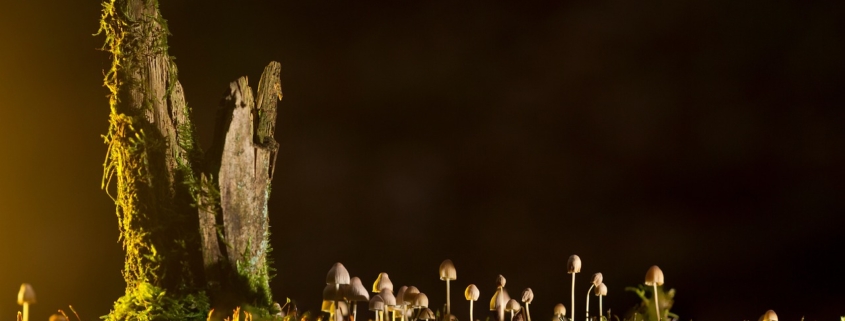The Hidden Power of Mushroom Spores: Nature’s Tiny Marvels
Mushrooms, with their fascinating shapes and variety, are a common sight in forests, gardens, and even kitchens. But what truly lies behind their beauty and mystery are the tiny spores that make their existence possible. Mushroom spores are the microscopic seeds from which new mushrooms grow, and they hold the key to the reproduction and spread of these remarkable fungi. Despite their small size, spores play a crucial role in the life cycle of mushrooms, and their significance goes far beyond what meets the eye.
What Are Mushroom Spores?
Mushroom spores are the reproductive units of fungi, similar to seeds in plants. They are typically single-celled and come in a variety of shapes, sizes, and colors, depending on the species of mushroom. Spores are produced in the gills or pores underneath the cap of the mushroom and are released into the environment when the mushroom reaches maturity. Each mushroom can release millions, sometimes even billions, of spores into the air, which then travel on wind currents, animals, or water to new locations where they can germinate and grow into new fungi.
The process of spore dispersal is one of nature’s most effective methods of reproduction, ensuring that mushrooms can colonize new areas and continue their life cycle. While many spores never find a suitable environment to grow, the sheer number produced guarantees that some will land in ideal conditions, where they can develop into new mushrooms.
The Importance of Spores in Mushroom Cultivation
For those interested in growing their own mushrooms, understanding and using spores is essential. Mushroom cultivation typically begins with spores, which can be collected and germinated to produce mycelium—the network of fungal threads that eventually give rise to mushrooms. Collecting spores is a simple process that involves placing a mature mushroom cap on a piece of paper or glass and allowing the spores to drop, creating a spore print. This spore print can then be used to inoculate a substrate, such as wood chips, straw, or compost, where the mycelium can grow and develop.
The use of spores in cultivation allows growers to propagate a wide variety of mushroom species, each with its unique flavor, texture, and nutritional profile. From gourmet mushrooms like shiitake and oyster to medicinal varieties like reishi, spores open the door to a diverse world of fungal cultivation, offering endless possibilities for home gardeners, farmers, and enthusiasts alike.
The Role of Spores in Ecosystems
Beyond their importance in cultivation, mushroom spores play a vital role in ecosystems. Fungi, including mushrooms, are essential decomposers in nature, breaking down organic matter such as dead plants, leaves, and wood, and recycling nutrients back into the soil. Spores ensure that mushrooms can colonize new areas where decomposition is needed, contributing to the health and balance of ecosystems.
In addition, spores themselves can serve as a food source for various organisms, including insects and other fungi. This makes them a crucial part of the food web, supporting biodiversity and promoting the stability of natural environments.
The Future of Mushroom Spores
As interest in sustainable agriculture, health, and natural products continues to grow, mushroom spores are gaining attention for their potential applications. Research into fungal spores is uncovering their use in areas such as bioremediation, where they help clean up environmental pollutants, and in medicine, where certain mushroom species show promise for their health benefits.
The study and use of mushroom spores are not only opening new avenues for scientific exploration but also offering practical solutions for some of the world’s most pressing challenges. From providing nutritious food sources to contributing to environmental sustainability, the potential of mushroom spores is vast and largely untapped.
A Tiny Miracle with a Big Impact
Mushroom spores may be tiny, but their impact on the natural world and human life is enormous. Whether you’re a mushroom enthusiast, a gardener, or simply someone interested in the wonders of nature, understanding the role of spores adds a deeper appreciation for the complex and beautiful life cycle of fungi. These microscopic powerhouses continue to amaze us with their resilience, versatility, and potential, proving that sometimes, the smallest things can have the biggest impact.



